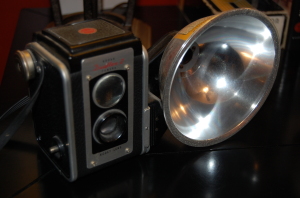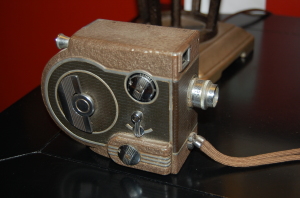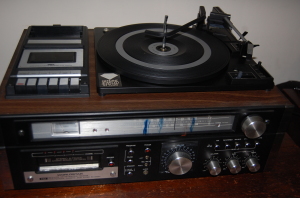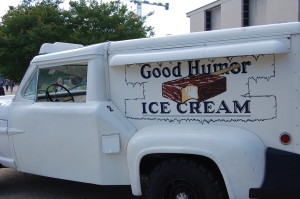1965
The oldest Boomer is 19 years old.
Cost of the Average House: $21,500
Median family Income: $6,900
Minimum Wage: $1.25/hr.
21-inch color TV: $269
First-class Stamp: 5 cents
Gallon Gasoline: 31 cents
New Car: Cadillac de Ville: $r,427
Studebaker Daytona: $2,405
Ford Mustang: $2,427
Shelby Cobra: $5,595
A year at Harvard In 1965 cost $2,700
TV: “A Charlie Brown Christmas,” Green acres,” “Hogan’s Heroes,” I Dream of Jeannie,” “My Mother the Car,”F.B.I.” “I Spy,” with Bill Cosby as Alexander Scott. “Big Villy,” ” A Man Called Shenandoah,” “Convoy,” “F Troop” “Lost in Space,” The Dating Game,” “The Wild Wild West,” “Loredo,” “Hullabaloo,” “Shindig”The Soupy sales Show,” “Get Smart.” The TV show “I Spy” will be remember as the first television show to feature a Black actor, Bill Cosby, in a lead role.
Movies: “Darling,” “Doctor Zhivgo,” “Ship of Fools,” ” A Thousand Clowns,” “The Sound of Music,” “Cat Ballou.” “The Pawnbroker,” becomes the first major Hollywood film to feature frontal nudity.
Music: The Beatles, “Yesterday,” “I Feel fine,
“Ticket to Ride” & Help!” ” I Can’t Help Myself.” Four Tops, Billy Stewart, “I Do Love You.” Wilson Pickett, “In The Midnight Hour.” Jr. Walker & The All Stars, “Shotgun”, Barbara Mason, “Yes I’m Ready.” Buck Owens, “I’ve Got A tiger By The Tail” Eddy Arnold, “What’s He Doing In My World,” Rolling Stones, “I Can’t Get No , Satisfaction” & “The Last Time.” Righteous Brothers, “You’ve Lost That Lovin’ Feelin'” & “Unchained Melody.” The Beach Boys, “Help Me Rhonda.”
From the book
BOOMERS How We Changed The World by Richard A. Jordan
Hoialong Caxidy
The Lone Ranger
The Cisco Kid
Tribute to TV Series of The 70s
TV Westerns

The Adventures of Ozzie and Harriet starred
America’s favorite family,” the real-life Nelsons-father, mother, and their two sons, David and Ricky. Ozzie Nelson, a former bandleader, wrote the scripts for the popular series, which aired from 1952 to 1966.
“I think there will always be a place for a wholesome, happy approach to life.”
Ozzie Nelson
“The fifties decade in television has often been called, the golden years”
Selling the same characters in so many different ways, Walt Disney Productions earned profits every year during the fifties. By 1962, when the Walt Disney Company had produced over 500 television shows and the theme park was a huge success, its aging founder said, “Our business is still making motion pictures.” But that wasn’t quite true. The films his factory continued to turn out were just the beginning of an integrated marketing process that Disney had expanded brilliantly over the years. Each new addition to the Disney family created a ripple effect in many different pools. In 1962, for example, the studio was preparing to release a new animated story called The Sword in the Stone, based on the legend of King Arthur. As part of the film’s marketing push, Disney licensed publishers to produce comics and hardcover books based on the movie. Songs from the musical were released as record and sold in sheet music form. At factories across the country, several of the more than 100 Disney licensees labored to stamp out King Arthur swords and other products based on the film. And Disney made sure the film was introduced through all of his own commercial venues: advertisements ran during his television shows. On the strength of the shrewd packaging and repackaging of original material, Walt Disney’s company had evolved into a sprawling giant, with about half of its revenues coming from motion pictures, one-third from Disneyland, and 5 percent from television and the remaining form merchandise licensing. Before the park was opened, Walt Disney Productions took a one-third stake in Disneyland and soon after absorbed it completely.
From the Book FORBES Greatest Business Stories Of All Time.
By Daniel Gross and Editors of Forbes magazine
This has many inspiring stories and is very inspiring, very cool.

Archie Bunker’s chair
About 1970 From the CBS television show All in the Family, 1971-79
As the post-World War II baby boom generation matured in the 1970s, many questioned the accepted view of the United States as an ideal and fully free society. Television began to reflect the growing awareness of social injustice with shows like the often-controversial All in the Family. It dealt with race, ethnicity, changing social mores, and the women’s liberation movement.
Gift of Tandem /TAT Productions, through Norman Lear to the Smithsonian
Archie Bunker
Tinker in Television is a vivid account of how the broadcasting business really runs-from sound stage to executive suite-and how tho run it successfully. The only person ever to have managed both a television production company (MTM) and a major network (NBC), Grant Tinker is uniquely qualified to explain the conflicts and priorities that determine how television programs are produced and how network decisions are made. In Tinker in Television, the story of his life in the business, he takes a hard look at the heroes and villains responsible for what American have watched for more than forty years and indicates the changes that should be made. The book is similarly unsparing about Tinker’s personal life, including his eighteen-year, ultimately failed marriage to Mary Tyler Moore.
Grant Tinker joined NBC’s first executive training program in 1949.moved on to stints at Radio Free Europe and a Manhattan-based production company, and then worked in the television departments of McCann Erickson and Benton & Bowles, just as the big advertising agencies were taking over network programming. In an era when job-hopping was thought to be a career-killer, he thrived on almost constant motion, and his timing was excellent. after a second round a NBC as head of programs in the early 1960s, he joined Universal when the Hollywood studios were becoming the major players in program production.
Tinker not only had a knack for being where the action was; time and time again he made the action. In 1970, he gave up his comfortable corporate post to start a production company MTM Enterprises, with Mary Tyler Moore. Tinker quickly earned a reputation for spotting and nurturing talent-including Allan Burns, James Brooks, Steven Bochco, Gary David Goldberg, and Bruce Paltrow-and for creating an environment from which their best work could emerge. The success of programs such as Mary Tyler Moore, Lou Grant, and Hill Street Blues made MTM the stuff of television legend and disproved the notion that quality programming and high ratings are mutually exclusive.
In 1981, Tinker left MTM at the peak of its success to try something new and harder-saving NBC, which had fallen into an abyss of low profits and dismal programming. When he left five years later, NBC’s profits had increased tenfold and its programs-including The Cosby Show, St. Elsewhere, and Cheers-were winning more Emmys than ABC and CBS combined.
For all his success and self-depreciation, Tinker is a complicated character, restless and perpetually unfulfilled. His story unfolds alongside that of the powerful medium in which he came of age and made a spectacular career.
Grant Tinker had three separate tours of duty at NBC, starting his career as the company’s first executive trainee and returning first as head of programs and finally as chairman. In between, he worked at Radio Free Europe, as an advertising agency program executive, as a production executive at two major Hollywood studios, founded and ran MTM Enterprises. (Notes from his book cover Tinker in Television by Grant Tinker and Bud Rukeyser)
The book is on point. This book puts you there; time and place very cool
OLDIES BUT GOODIES
Steve Allen The Tonight Show
Hill Street Blues
The Ed Sullivan Show: Top 10 Musical Performances
- The Beatles
- Elvis Presley
- The Jackson 5
- The Supremes
- The Rolling Stones
- The Doors
- Bill Haley & His Comets
- The Temptations
- The Beach Boys
- The Lovin’ Spoonful
The most exciting moment for the Supremes came in December 27, 1964. On that date, they appeared live on “The Ed Sullivan Show,” the most popular television variety show of the day, watched by millions of Americans every Sunday evening. The Supremes were the first Motown act to be featured by Sullivan. Wearing blue dresses, they sang “Come See About Me” to an enthusiastic studio audience making countless new fans across the nation and achieving a mayor advance for black music. Before the Supremes could catch their breath after their whirlwind of success, they were back in the studio on January 5, 1965, to record what was to become their fourth number one hit, ”Stop! In the Name of Love.” The song had been inspired by an argument between songwriter Lamont Dozier and his wife. In the middle of the dispute, Dozier had come up with the ridiculous line; both he and his wife began to laugh, and a hit was born. In March, the song climbed above the Beatles’ “Eight Days a Week” to the pinnacle of the pop charts. It was an auspicious beginning to what promised to be another busy year. During the course of the year, the Supremes appeared on more than 15 national television shows. In addition to many more appearances on “The Ed Sullivan Show (Sullivan grew to love the group), the Supremes were featured on “Hullabaloo,” “The Hollywood Palace,” “The Tonight Show,” The Dean Martin Show”, and “The Red Skelton Show,” to name just a few. Suddenly, they were familiar faces among the top stars of stage and screen. They were on television with Sammy Davis, Jr., Bob Newhart, and Judy Garland, and they also appeared on the covers of Time and Ebony magazines.
From the book DIANA ROSS – ENTERTAINER by John Wyeth, Jr.
Great stuff, great stuff, this little book is full of great stuff. This is a fun and informative book. Real cool.January 15, 1967 – The Rolling Stones appear on the Ed Sullivan’s Show. At Ed Sullivan’s request, the band changed their lyrics from “let’s spend the night together” to “let’s spend some time together.”
WE HAD SOME GREAT SHOWS
Steve Allen: TV Legend
“I prefer to live on a year-to-year basis. Life is exciting if you keep making it exciting.”
Steve Allen

JOHNNY CARSON: Student of Comedy
NBC’s Tonight Show dated back to 1951, when it debuted as a late-night variety show titled Broadway Open House, hosted by comedian Jerry Lester and his pulchritudinous sidekick, Dagmar. Maybe television was really invented for entertainers like Dagmar, whose two biggest talents could not be appreciated on radio. As Johnny once ad-libbed about a guest during a commercial break, “She could have nursed Wyoming.” Then Steve Allen hosted the show for almost four years, introducing great performers like my friends Steve Lawrence and Eydie Gorme, and Andy Williams, and doing parody sketches like “What’s My Pain?” when he left, the network didn’t have any idea what to do with the time slot; after experimenting with Ernie Kovacs for a few months, they created a really terrible news, interview, and gossip show called America after Dark, with Jack Lescoulie and Al “Jazzbo” Collins. That failed, so in desperation they hired Jack Paar. Paar, a low-key comedian who had hosted several radio and summer replacement television programs, described himself as “Lawrence Welk without music.” Paar saved The Tonight Show, and maybe all of live late-night television.

Hee Haw- Pickin & Grinnin 1973
Scatman Crothers and Redd Fox
He was best known as Louie the Garbageman in the 1970s TV series Chico and the Man and for his voice-over work in such television cartoon series as Hong Kong Phooey and The Transformers. But Scatman Crothers, who was sixty-four years old when he first appeared on Chico, had paid many years’ worth of dues in Hollywood. He was ubiquitous on television and in films; the number of both in which he appeared would make good trivia questions.
On television, he was the first black actor on a regular series, the local l Los Angel show Dixie Showboat. That was back in the late 1940s, when blacks on television were offered only comedy or musical roles. He watch the medium mature and lived to see the time when a black could claim a role that could be played by an actor of any race or ethnicity.
His major film credits date back to 1952, with Meet Me at the Fair, starring Dan Dailey. He sang a stereotypical song titled “I Got the Shiniest Mouth in Town,” but in being billed fourth, he was the first black to receive such high billing with whites. In this medium, too he lived to play dignified roles that were not dependent on his race.
Few people are aware that Scatman never sought fame as an actor and never took an acting lesson in his life. During most of his career, which began in the teens of this century in the speakeasies of Terre Haute, Indiana, and ended in 1986 when ill health force him to withdraw from the television series Morning Star/Evening Star, he was a musician, singer, and songwriter. His nickname suggests his original calling. In 1932 he dubbed himself Scatman because of his habit of scatting song lyrics. He spent thirty-odd years performing as a single and leading bands and small combos, traveling around the country-primarily in the Middle West, but also in the south and on the East Coast. So well did he enjoy performing in supper clubs that he continued to do so into the 1970s, whenever his television and film schedule permitted.
From the introduction of the book SCATMAN AN AUTHORIZED BIOGRAPHY OF SCATMAN CROTHERS by Jim Haskins with Helen Crothers
The is book short but Tall, real cool.
Giant stars from sports or entertainment bring their own followers to the product, particularly if we can believe they might actually use the product at home; for a sponsor, such performers are well worth their high cost. If we already like to daydream about Ali or Reggie, the commercials help us by showing the hero in a new scene, with a new product. And if we want to bring the dream closer to reality, we can buy and eat that product, too.
Some stars are aware of this power and advertise to sponsors that they are available. Howdy Doody and his pal Buffalo Bob used to plug Tootisie Rolls, Hostess Twinkies, Wonder bread, and Colgate toothpaste on the old Howdy Doody Show; now Bob’s agent, Jack Drury, thinks the pair should be hired again to work on those kiddies who have grown up. “Today,” he points out in an ad in Advertising Age, “those very children of the nationwide Peanut Gallery are young adults with families of their own, careers, bank accounts, cars, homes and television sets. They are the very market that most advertisers long to reach.” So far no one has taken him up on that. But his argument is valid. Stars bring credibility built up in mythic roles on screen or sports fields, and they do transfer some portion of that magic to the product. So if you have a new product that no one will believe in, or a service in a field most people mistrust, a star can persuade people to give you a try. Twenty-three percent of those commercials rated as the 100 Best in Advertising Age’s annual competition come with big stars, most of whom haul down huge salaries –Sir Laurence Olivier, $500,000 from Polaroid; Henry Fonda, $15,000 a year from Bulova. Clearly, animals would be cheaper. Cats and dogs come at $25 and hour, but if you’re pushing pet food, you have to persuade them to eat your brand. (To give them anything else is considered deceptive advertising.) Other animals are more expensive: lions cost $150 and hour, and elephants $600 plus trucking. But even if one of these animals eats your extras, or stomps your set, you don’t have to pay residuals.
From Jonathan Price book THE BEST THING ON TY COMMERCIALS (1978)
The Dean Martin Variety Show – Fun for all…..
For years, RCA and NBC’s long-time rival in the radio business, CBS, had been trying to develop a system that could deliver color pictures. The Federal Communications Commission 9FCC), eager to establish a standard, approved a system devised by CBS in October 1950. In so doing, the FCC overlooked RCA’s system, which was still, admittedly, in development. Sarnoff was undaunted by the setback. “We may have lost the battle, but we’ll win the war,” he said. CBS didn’t rush to manufacture color sets because color was not compatible with existing cables. And in 1953 CBS abandoned it entirely. Meanwhile, RCA’s scientists continued to plug away at a system that could send color over existing cables to run on twenty-one-inch screens. RCA brought a twenty-one-inch color set to the market in 1954. Though relatively cheap-$795 in 1955- color television was slow to catch on. Black and white sets were still more affordable and color TV’s quality was bad. Sarnoff had forecasted that sales would quickly grow75,000 in 1954 and to 3 million in 1957. But by 1958 just 325,000 color sets had been sold. Bob Hope joked that color television had “a tremendous audience-General Sarnoff and his wife.
From the book Forbes Greatest Business Stories of All Time
By Daniel Gross and Editors of Forbes magazine
This is a very informative and inspiring book. Real cool.
“In 1960, CBS introduced us to the world of a small-town sheriff named Andy Taylor. The warmth and honesty of his village, a mythical place called Mayberry, was experienced on both sides of the lens. Andy Griffith recalled, “That show was special. Here was a group of people who could all work together with no ego problems. Nobody cared who got the joke or who came up with it.”
From the book Old-Time Television compiled and edited by Criswell Freeman
This book is real neat book, warm, funny, informative, entertaining. Real cool
Quotes from the book can be found throughout the website.
“I consider the television set as the American fireplace, around which the whole family will gather.”
Red Skelton

HOW MANY OF THESE TV SHOWS DO YOU REMEMBER?
Beat the Clock, Roy Rogers, Cisco Kid, Zorro, Bowling for Dollars, Break The Bank, Hollywood Squares, Jeopardy, Name That Tune, The Andy Griffith Show, Please Don’t Eat The Daises, Mash, Mister Ed, The Munsters, Wonderama, Charlie’s Angels, Jonny Quest,The Price is Right, Queen for a Day, What’s My Line, Ben Casey, Star Search, Love Boat, My Favorite Martian, Hogan’s Heroes, The Mod Squad, My Three Sons, Mannix The Honeymooners, The Mr. Lucky, The Millionaire, The Gog Show, To Tell The Truth, Truth or Consequences, Treasure Hunt, Wheel of Fortune, Maverick, Barnaby Jones, Another World, The Beverly Hillbillies, The Jetsons, F Troop, The $64,000 question, Baywatch, The Courtship of Eddie’s Father, The Arsenio Hall Show, Bill Moyers Journal, America’s Most Wanted, Archie Bunker’s Place, American Bandstand, Benson, Good Times, The Lone Ranger, Gun Smoke, Davey Crockett, , Bat Masterson, 77 Sunset Strip, Happy Days, American Masters, Perry Mason, Hawaii Five O, Gilligan’s Island, Dobie Gillis, What’s Happening, Chiller, The Partidge Family, The Electric Company, The Carol Burnett Show, Ice Station Zebra, Captain Kangaroo, Courageous Cat and Minute Mouse, Speed Racer, The Brady Bunch, Room 222, Love American Style, The Dating game, The newlywed Game, Let’s Make a Deal, The Addams Family, The Munsters ,Hogan’s Heroes……
Finally, Hooker extricates himself from his guitar and slumps into the guest chair for a quick burst of badinage. Such is his degree of composure that for one surreal moment it seems as if he is the host and Letterman the guest. They discuss the then-recent San Francisco earthquake and Hooker allows that it weren’t no big deal: when the quake hit he thought his pet cat had just jumped onto his bed. Must be a big cat, says Letterman; yep, says John Lee. Then Letterman asks Hooker to explain the motifs he wears on his lapels. Why the star? “Because I’m the star,” Hook tells him. And why the dollar sign? “Because,” John Lee replies, “I plays for money.”
From the book Boogie Man by Charles Shaar Murray
Entertaining, a fun read, real cool.
TV DINNERS
Inventor; Gerry Thomas
1953 Omaha, Nebraska
His Idea became the Swanson TV Dinner.
Frozen meals are a relatively recent innovation, although ancient cultures, including the Chinese and Greek, experimented with cellars made of ice or insulated by snow. It wasn’t until Clarence Birdseye, a Canadian engineer and avid fisherman, applied freezing technology to food so that it could be marketed as a convenience. However, the public didn’t embrace frozen foods until World War II metal needs made canned goods scarce. Once frozen foods caught on, people started looking for new ways to use them. The war was over, the standard of living was high, and a new styled of cooking and dining was on the rise. Into this mix came television,drawing families around it and making people unwilling to spend time on cooking when a particular show was due to start. But it wasn’t the TV itself that inspired “TV” dinners”; it was a turkey surplus. In 1953, C.A. Swanson and Sons, a frozen foods company based in Omaha, Nebraska, grossly overestimated the demand for frozen turkeys at Thanksgiving and had 520,000 pounds of extra frozen poultry. A traveling salesman for the company, Gerry Thomas, had experimented with aluminum trays that airlines used for heated food and developed a three-compartment design. He presented his design to the Swansons, filled with turkey and trimmings and made to look like a television, complete with “control” knobs. Most food historians agree that the segmented tray, which kept foods tidy and reminded consumers of childhood, made TV dinners such a success.
From the National Geographic book An Uncommon History of Common Things by Bethanne Patrick and John Thompson
Discover the amazing stories behind hundreds of ordinary objects, events, and inventions.. and learn how the simplest ideas can unleash tumultuous worldwide change..A great book for every coffee table, every library, everybody. Real cool.
THE GOLDEN AGE OF TELEVISION
Selling the same characters in so many different ways, Walt Disney Productions earned profits every year during the fifties. By 1962, when the Walt Disney Company had produced over 500 television shows and the theme park was a huge success, its aging founder said, “Our business is still making motion pictures.” But that wasn’t quite true. The films his factory continued to turn out were just the beginning of an integrated marketing process that Disney had expanded brilliantly over the years. Each new addition to the Disney family created a ripple effect in many different pools. In 1962, for example, the studio was preparing to release a new animated story called The Sword in the Stone, based on the legend of King Arthur. As part of the film’s marketing push, Disney licensed publishers to produce comics and hardcover books based on the movie. Songs from the musical were released as record and sold in sheet music form. At factories across the country, several of the more than 100 Disney licensees labored to stamp out King Arthur swords and other products based on the film. And Disney made sure the film was introduced through all of his own commercial venues: advertisements ran during his television shows. On the strength of the shrewd packaging and repackaging of original material, Walt Disney’s company had evolved into a sprawling giant, with about half of its revenues coming from motion pictures, one-third from Disneyland, and 5 percent from television and the remaining form merchandise licensing. Before the park was opened, Walt Disney Productions took a one-third stake in Disneyland and soon after absorbed it completely
 GOLDEN YEARS-OLD SCHOOL NICKELODEON Launched 1977 “Putting Kids First”
GOLDEN YEARS-OLD SCHOOL NICKELODEON Launched 1977 “Putting Kids First”

 Nickelodeon
Nickelodeon
DOO-WOP BUMPERS
Preview of the First Sesame Street Old School volume 1969
Sesame Street: Old School (1969-1974)
Rowan & Martin’s Laugh-In with Goldie HawnIn this candid and unconventional memoir, Goldie Hawn invites us to join her in a look back at the remarkable people and events that have touched her. It is a joyous- and sometimes surprising-spiritual journey of the heat in search of enlightenment. With the effervescent humor and generosity that are familiar to everyone, Goldie talks about the lessons she’s learned, and the wisdom she feels she’s been given, in the hope of giving something back. Not a Hollywood tell-all, A Lotus Grows in the Mud is rather a very personal look at moments both private and powerful and the ways those moments have helped carry her through life.
From the book Goldie a Lotus Grows in the Mud
By Goldie Hawn with Wendy Holden
It’s fun, just like her. Real cool.
TV Shows On The Radio – The Ultimate Old-Time Radio Collection Vol. 3
Vintage Radio Shows.
oldschoolgoldenyears.com
Old School Golden years Images







































hey. you have a pretty good post there mate.
Hello. I recently found ones web site the usage of yahoo. Which is a genuinely nicely published post. I’ll make sure to bookmark them and also go back to find out more of your respective handy details. Basically publish. I’m going to unquestionably comeback.
Mycoventgardencabs.co.uk offers the cheapest quote on Covent Garden, Leicester Square, Soho, Holborn, Tottenham Court Road, Euston, Kings Cross Minicabs & Taxis from/to anywhere in London (short journeys or long journeys). Call us on 0208 123 3084 (Overseas +44 208 123 3084) and book your Leicester Square, Holborn & Covent Garden Cab & Taxi now.
Thanks you so very much for your visit to oldschoolgoldenyears.com “making online shopping fun” Please visit again, like your favorite pages and posts and share with friends and family.
whoah this blog is wonderful i love reading your posts. Keep up the good work! You know, lots of people are hunting around for this info, you can help them greatly.
Thank you so very much. Please visit again, like the pages or posts you like. And please share with friends and family. God bless.
Generally I wouldn’t understand post on information sites, nevertheless i would choose to claim that the following write-up extremely urged everyone you need to do hence! Your current crafting style have been shocked everyone. Appreciate it, very excellent document.
Thank you so very much for your visit. Please share with friends,visit again and like your favorite posts and pages. Have a bless Holiday Season. From oldschoolgoldenyears.com “Making Online Shopping Fun”
Fantastic site. Plenty of helpful information below. I’m submitting this to a number of associates ans also revealing around yummy. Not to mention, thanks a lot to your perspiration!
Thank you so very much for your visit. Please visit do visit again and like your favorite posts and pages. Please share the site with others. Please have a happy and blessed new year.